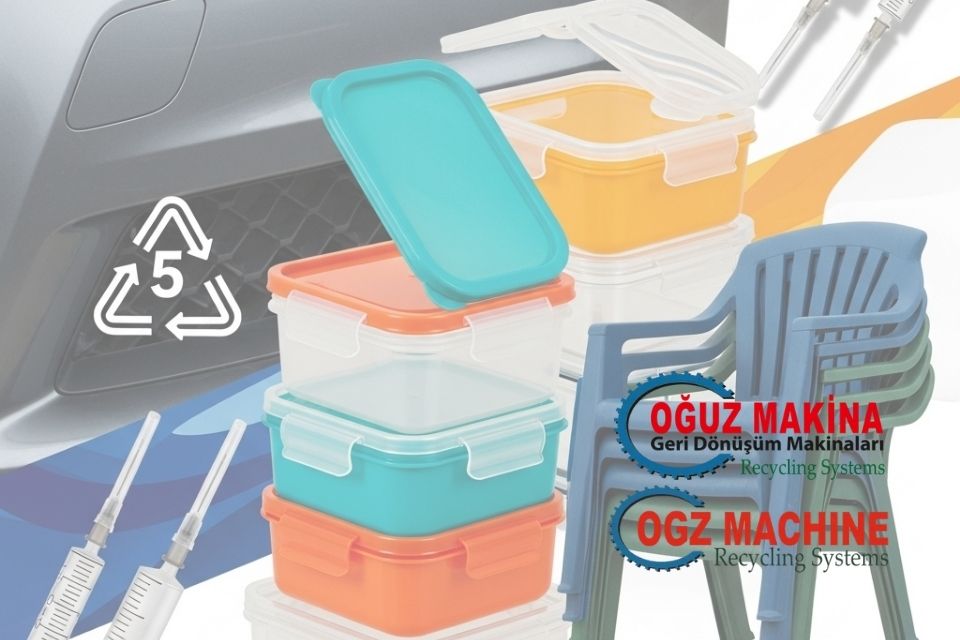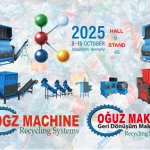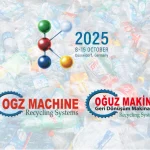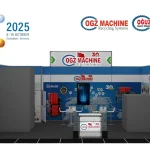From the yogurt cup in your fridge to the bumper of your car, from the carpet in your living room to your baby’s bottle, there is one common hero: Polypropylene (PP). Recognized by the number 5 inside the recycling symbol, this material is the world’s second most widely used type of plastic. But what makes PP so indispensable? Let’s take a closer look at this durable and versatile plastic.
What is Polypropylene (PP)?
Polypropylene is a thermoplastic polymer obtained by polymerizing propylene monomers. First synthesized in 1954, it quickly gained popularity thanks to its low cost and excellent balance of superior physical properties.
Key Features of Polypropylene
The secret behind PP’s wide range of applications lies in its unique properties:
- High Heat Resistance: PP has a higher melting point (about 160–170 °C) compared to many other plastics. This makes it ideal for microwave-safe containers, hot-fill packaging, and dishwasher-safe products.
- Chemical Resistance: It is highly resistant to many chemicals such as acids, bases, and solvents. This makes it perfect for lab equipment, cleaning product packaging, and automotive parts (like battery cases).
- Lightweight yet Strong: Despite its low density, it is tough and durable, enabling the production of lightweight yet impact-resistant products.
- Moisture and Water Barrier: PP does not absorb water or moisture, making it excellent for food packaging and outdoor furniture.
- Fatigue Resistance: It withstands bending and flexing extremely well. Hinged caps (like those on ketchup bottles) can be opened and closed millions of times when made from PP. This property is called the “integral hinge.”
- Food Safety (BPA-Free): PP does not contain Bisphenol A (BPA) and is considered one of the safest plastics for food contact. For this reason, it is widely used in baby bottles, food containers, and packaging.
Where is Polypropylene Used?
If you look around carefully, you’ll notice PP is everywhere:
- Packaging Industry: Yogurt cups, margarine tubs, chip bags, bottle caps, microwaveable ready-meal containers.
- Automotive Sector: Bumpers, dashboards, door panels, battery cases, fans.
- Household Items: Plastic chairs, storage boxes, carpet backings, kitchenware, garden furniture.
- Textiles: Sold under names like “polypropylene” or “olefin” in carpets, rugs, indoor/outdoor fabrics, thermal underwear, and even disposable coveralls and masks (as non-woven fabric).
- Medical and Laboratory Equipment: Syringes, test tubes, Petri dishes, and other sterilizable medical products.
- Toys and Baby Products: Chosen for its durability and safety in many toys and baby bottles.
Can Polypropylene Be Recycled?
Yes! PP (No. 5) is recyclable. The recycling process generally includes:
- Collection and Sorting: Separated from other plastics.
- Shredding and Washing: Broken down into small pieces and cleaned.
- Melting and Pelletizing: Melted and transformed into reusable granules (pellets).
Recycled PP (rPP) is used to manufacture car parts, storage boxes, garden tools, compost bins, and pallets.
Advantages and Disadvantages
| Advantages | Disadvantages |
|---|---|
| High heat and chemical resistance | Sensitive to UV radiation (can be improved with additives) |
| Lightweight, strong, and impact-resistant | Can become brittle at low temperatures |
| Low production cost | Difficult to bond with certain adhesives |
| Excellent fatigue resistance (ideal for hinges) | Harder to paint compared to other plastics |
| Safe for food contact, BPA-free | |
| Recyclable |
Conclusion
Polypropylene (PP) is one of the most important materials shaping modern life. Thanks to its low cost, superior durability, and reliability, it appears everywhere—from a simple yogurt cup to life-saving medical devices. As consumers, our responsibility is to ensure that this valuable material is properly recycled after use, contributing to the circular economy.





